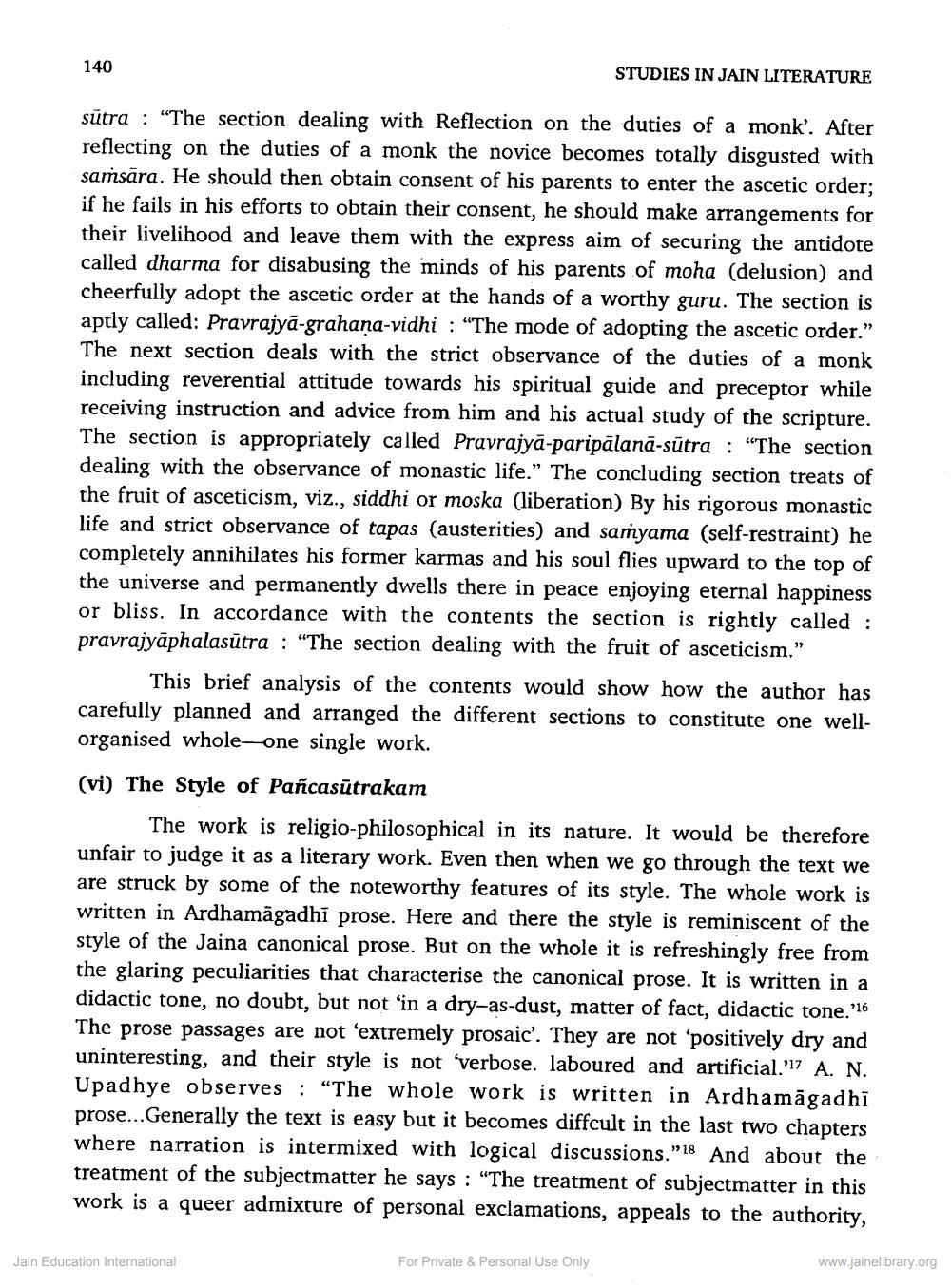________________ 140 STUDIES IN JAIN LITERATURE sutra : "The section dealing with Reflection on the duties of a monk'. After reflecting on the duties of a monk the novice becomes totally disgusted with samsara. He should then obtain consent of his parents to enter the ascetic order; if he fails in his efforts to obtain their consent, he should make arrangements for their livelihood and leave them with the express aim of securing the antidote called dharma for disabusing the minds of his parents of moha (delusion) and cheerfully adopt the ascetic order at the hands of a worthy guru. The section is aptly called: Pravrajya-grahana-vidhi : "The mode of adopting the ascetic order." The next section deals with the strict observance of the duties of a monk including reverential attitude towards his spiritual guide and preceptor while receiving instruction and advice from him and his actual study of the scripture. The section is appropriately called Pravrajya-paripalana-sutra : "The section dealing with the observance of monastic life." The concluding section treats of the fruit of asceticism, viz., siddhi or moska (liberation) By his rigorous monastic life and strict observance of tapas (austerities) and samyama (self-restraint) he completely annihilates his former karmas and his soul flies upward to the top of the universe and permanently dwells there in peace enjoying eternal happiness or bliss. In accordance with the contents the section is rightly called : pravrajyaphalasutra : "The section dealing with the fruit of asceticism." This brief analysis of the contents would show how the author has carefully planned and arranged the different sections to constitute one wellorganised whole-one single work. (vi) The Style of Pancasutrakam The work is religio-philosophical in its nature. It would be therefore unfair to judge it as a literary work. Even then when we go through the text we are struck by some of the noteworthy features of its style. The whole work is written in Ardhamagadhi prose. Here and there the style is reminiscent of the style of the Jaina canonical prose. But on the whole it is refreshingly free from the glaring peculiarities that characterise the canonical prose. It is written in a didactic tone, no doubt, but not 'in a dry-as-dust, matter of fact, didactic tone. '16 The prose passages are not 'extremely prosaic'. They are not positively dry and uninteresting, and their style is not 'verbose. laboured and artificial.'17 A. N. Upadhye observes : "The whole work is written in Ardhamagadhi prose...Generally the text is easy but it becomes diffcult in the last two chapters where narration is intermixed with logical discussions."18 And about the treatment of the subjectmatter he says : "The treatment of subjectmatter in this work is a queer admixture of personal exclamations, appeals to the authority, www.jainelibrary.org Jain Education International For Private & Personal Use Only




